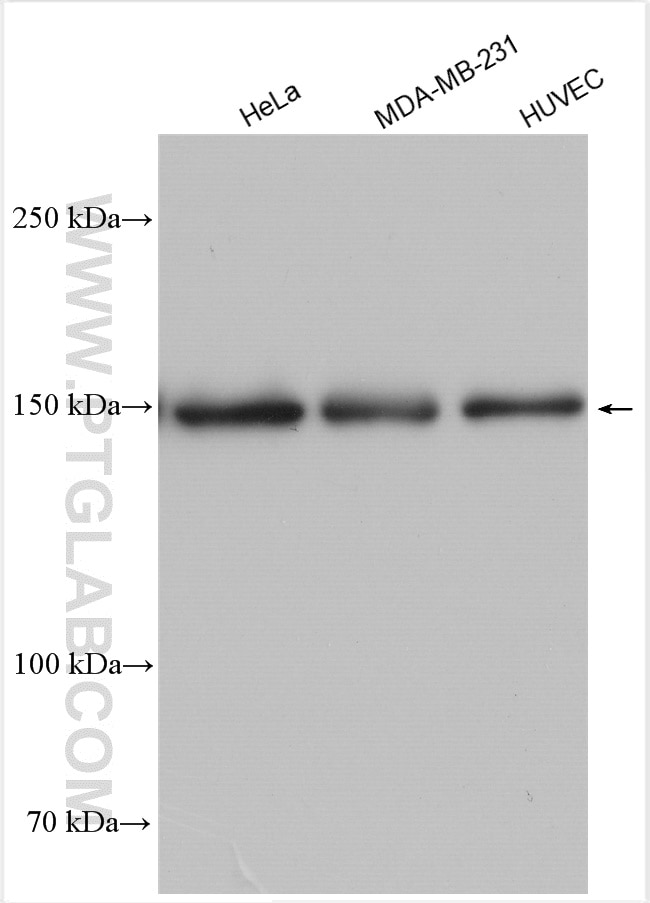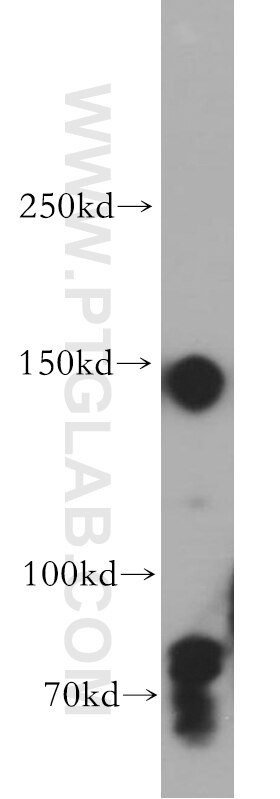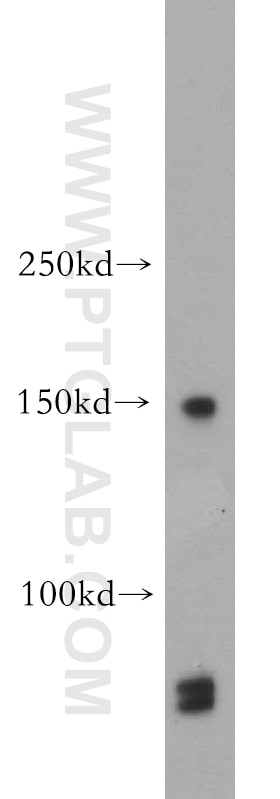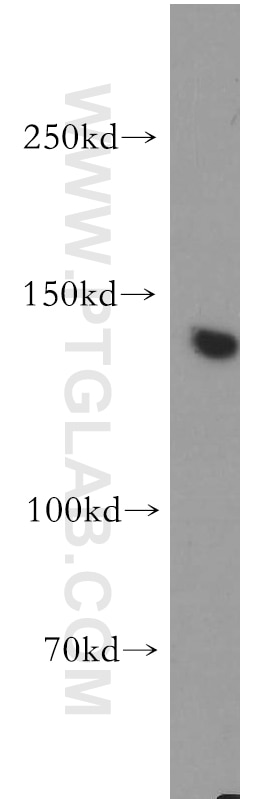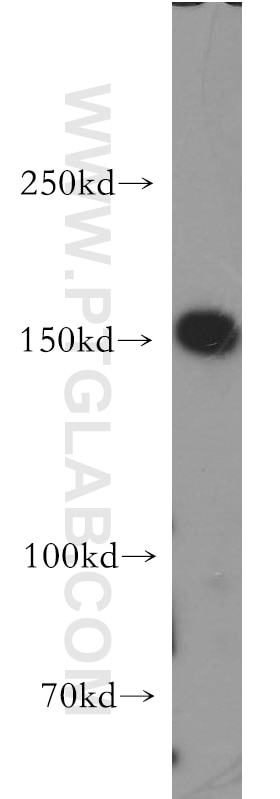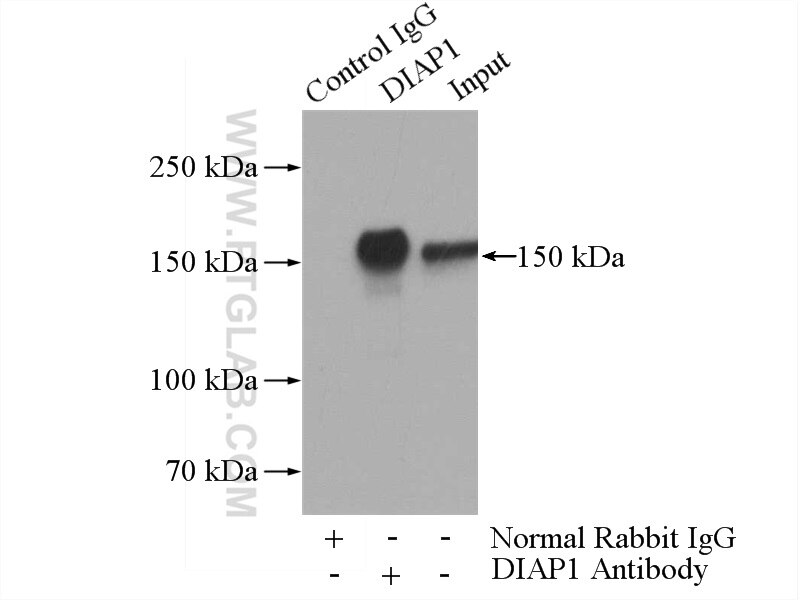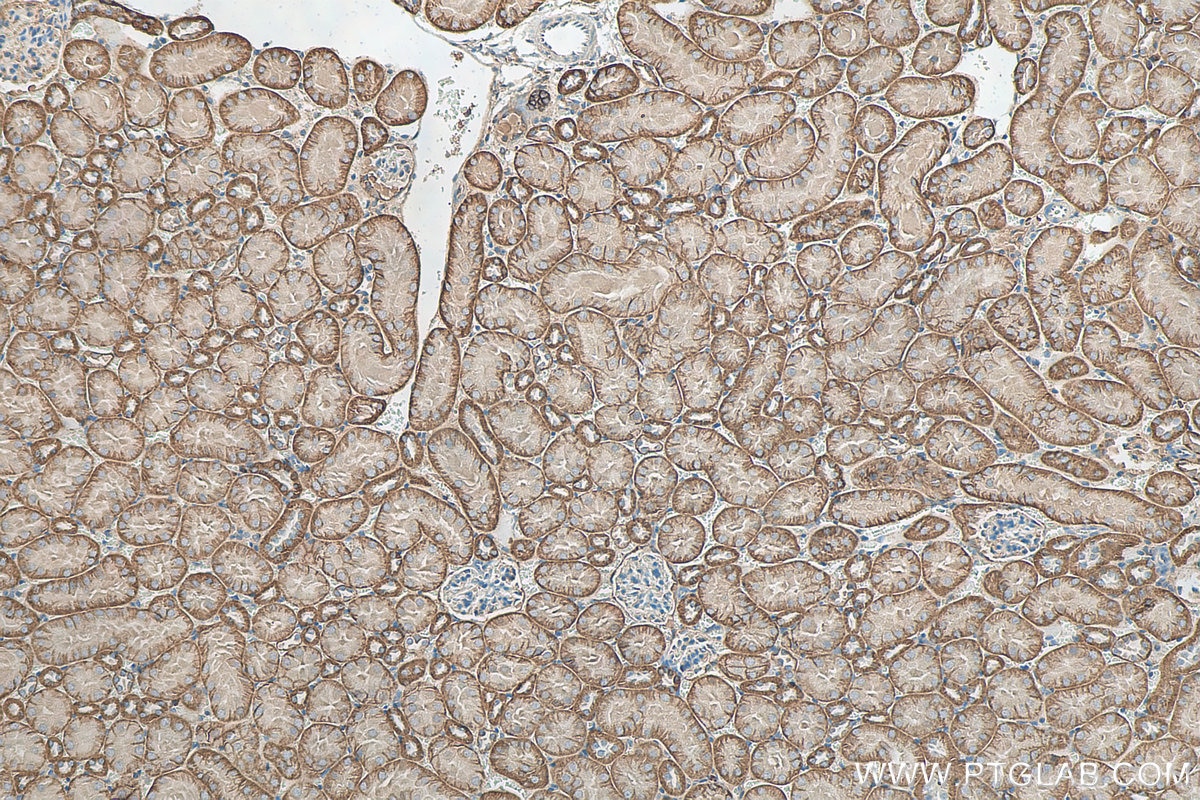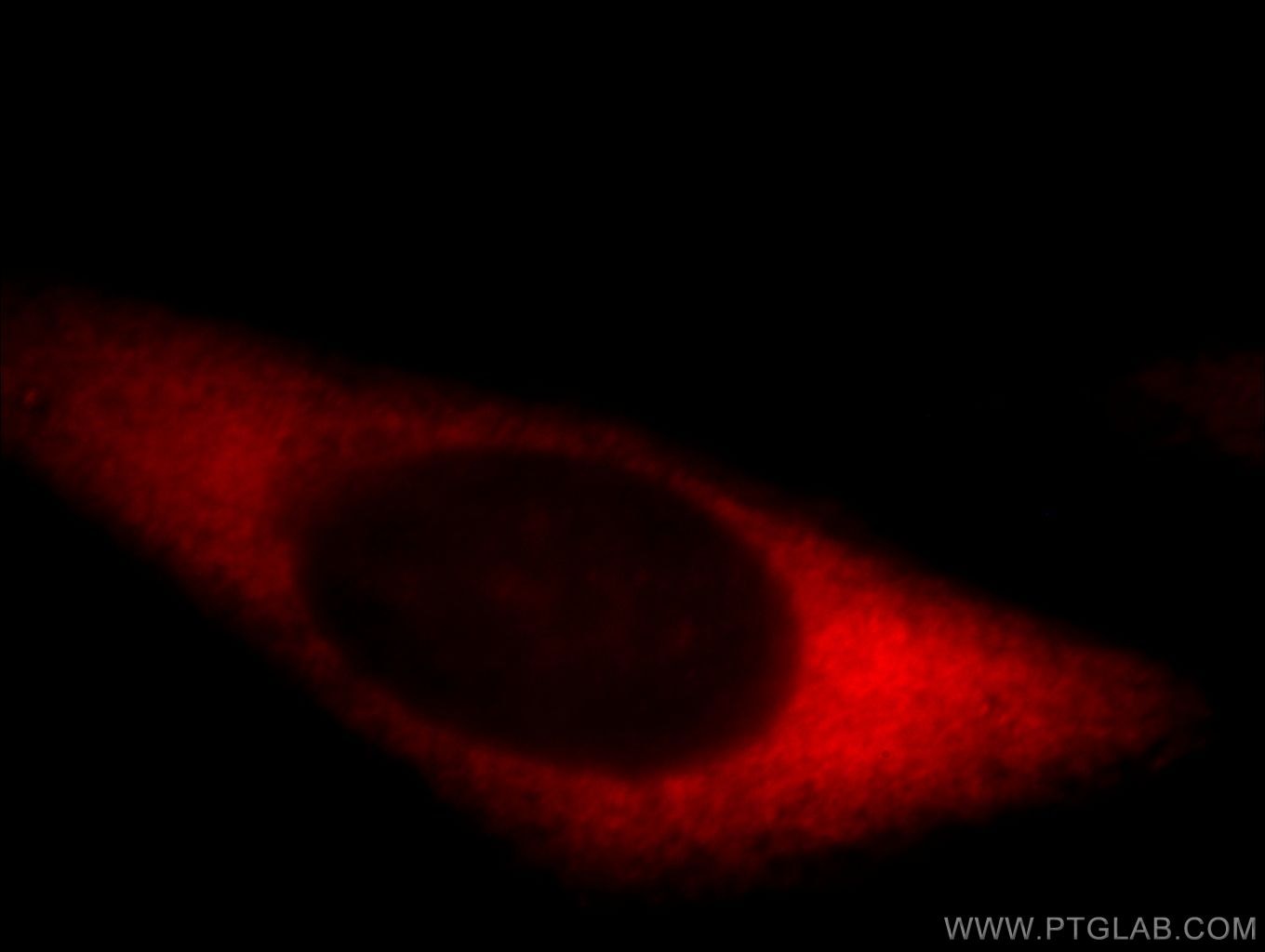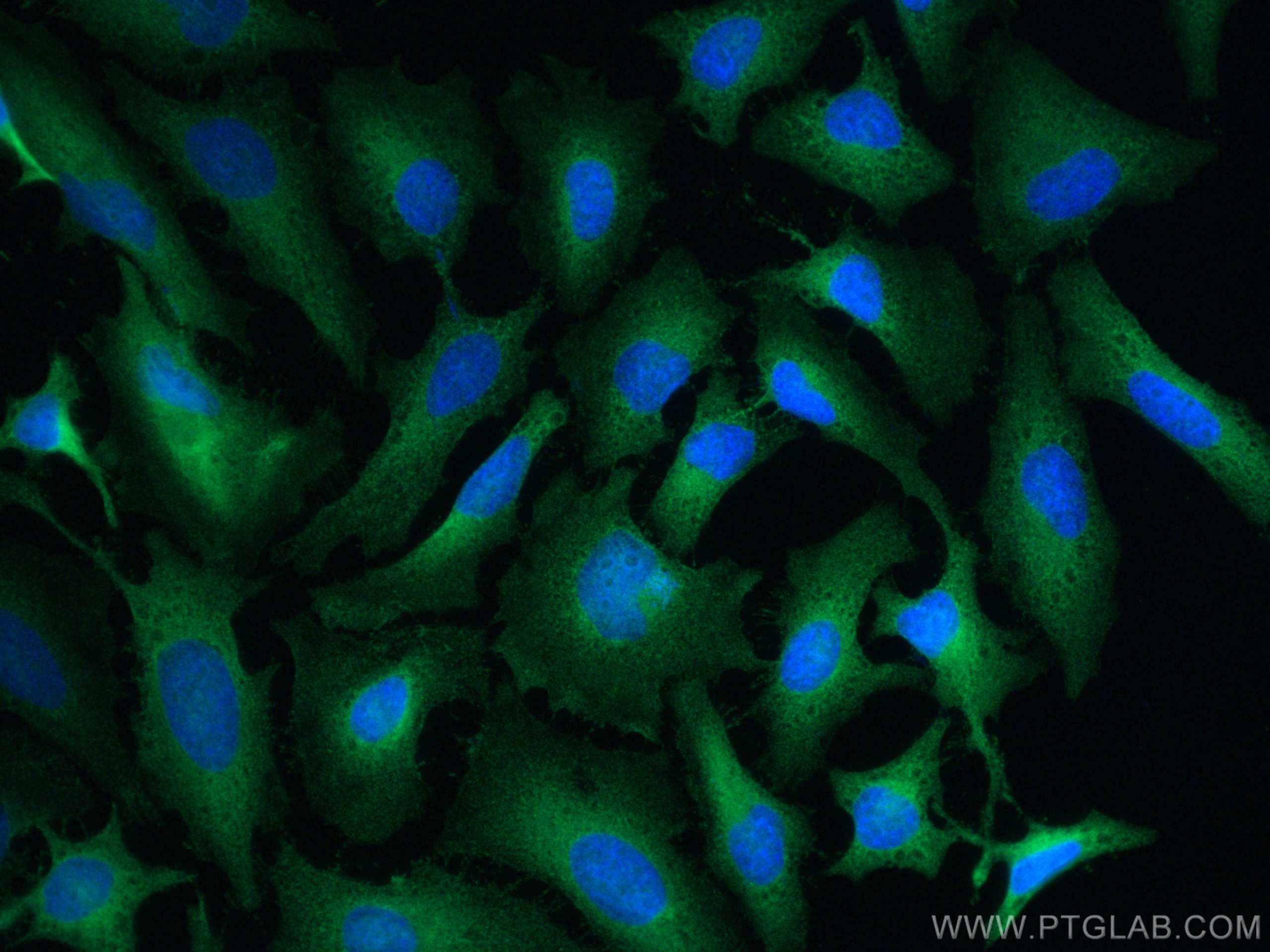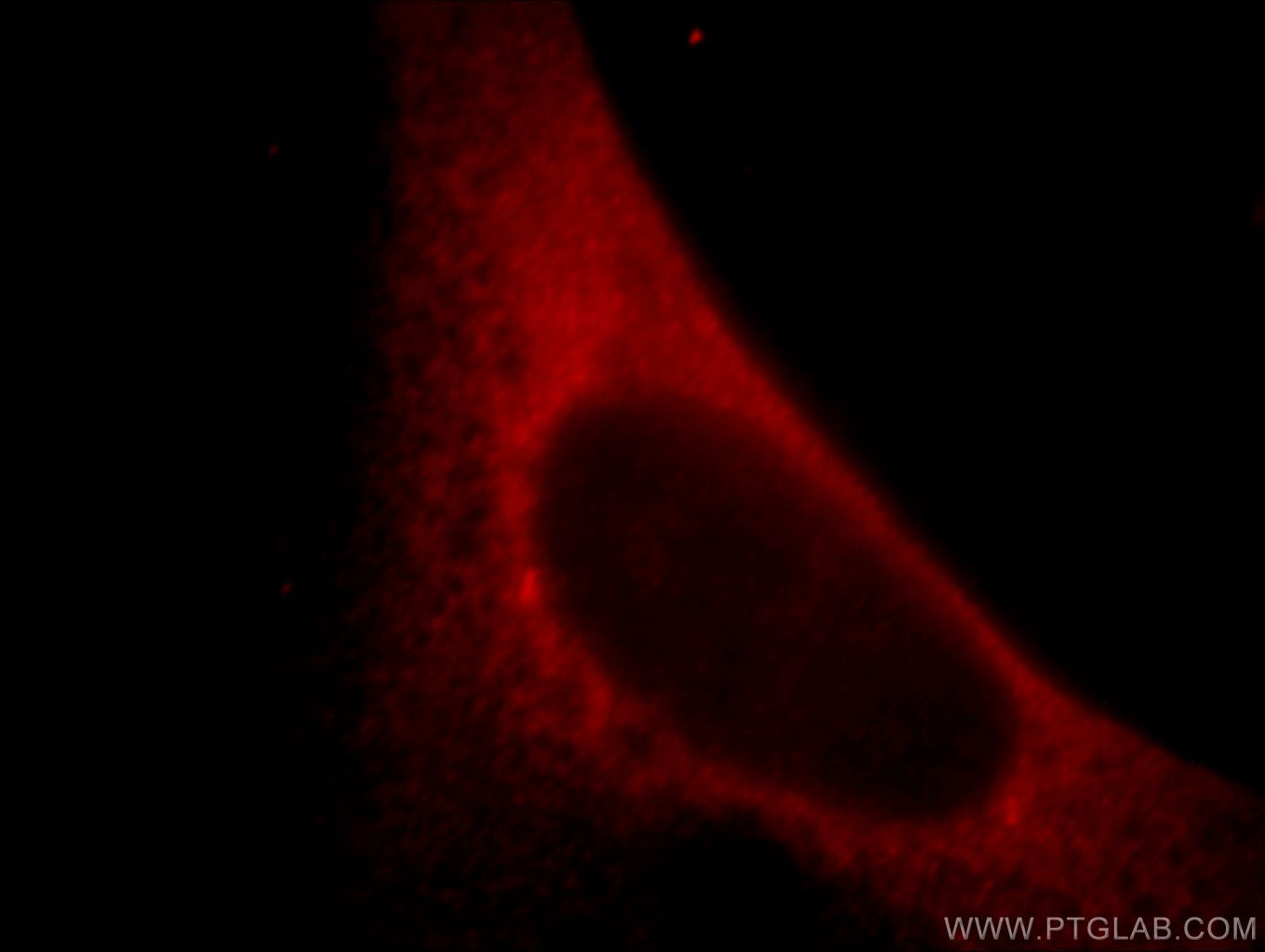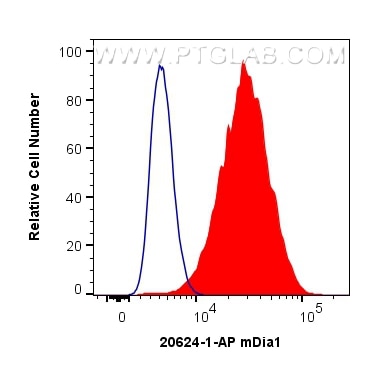- Featured Product
- KD/KO Validated
mDia1 Polyklonaler Antikörper
mDia1 Polyklonal Antikörper für FC, IF, IHC, IP, WB, ELISA
Wirt / Isotyp
Kaninchen / IgG
Getestete Reaktivität
Affe, human, Maus, Ratte
Anwendung
WB, IP, IHC, IF, FC, ChIP, ELISA
Konjugation
Unkonjugiert
Kat-Nr. : 20624-1-AP
Synonyme
Galerie der Validierungsdaten
Geprüfte Anwendungen
| Erfolgreiche Detektion in WB | HeLa-Zellen, COS-7-Zellen, humanes Herzgewebe, humanes Skelettmuskelgewebe, HUVEC-Zellen, MDA-MB-231-Zellen, NIH/3T3-Zellen |
| Erfolgreiche IP | HeLa-Zellen |
| Erfolgreiche Detektion in IHC | Mausnierengewebe Hinweis: Antigendemaskierung mit TE-Puffer pH 9,0 empfohlen. (*) Wahlweise kann die Antigendemaskierung auch mit Citratpuffer pH 6,0 erfolgen. |
| Erfolgreiche Detektion in IF | HeLa-Zellen, HepG2-Zellen |
| Erfolgreiche Detektion in FC | HeLa-Zellen |
Empfohlene Verdünnung
| Anwendung | Verdünnung |
|---|---|
| Western Blot (WB) | WB : 1:1000-1:8000 |
| Immunpräzipitation (IP) | IP : 0.5-4.0 ug for 1.0-3.0 mg of total protein lysate |
| Immunhistochemie (IHC) | IHC : 1:50-1:500 |
| Immunfluoreszenz (IF) | IF : 1:50-1:500 |
| Durchflusszytometrie (FC) | FC : 0.40 ug per 10^6 cells in a 100 µl suspension |
| It is recommended that this reagent should be titrated in each testing system to obtain optimal results. | |
| Sample-dependent, check data in validation data gallery | |
Veröffentlichte Anwendungen
| KD/KO | See 5 publications below |
| WB | See 15 publications below |
| IHC | See 3 publications below |
| IF | See 8 publications below |
| ChIP | See 1 publications below |
Produktinformation
20624-1-AP bindet in WB, IP, IHC, IF, FC, ChIP, ELISA mDia1 und zeigt Reaktivität mit Affe, human, Maus, Ratten
| Getestete Reaktivität | Affe, human, Maus, Ratte |
| In Publikationen genannte Reaktivität | human, Maus |
| Wirt / Isotyp | Kaninchen / IgG |
| Klonalität | Polyklonal |
| Typ | Antikörper |
| Immunogen | mDia1 fusion protein Ag14523 |
| Vollständiger Name | diaphanous homolog 1 (Drosophila) |
| Berechnetes Molekulargewicht | 1272 aa, 141 kDa |
| Beobachtetes Molekulargewicht | 140-150 kDa, 70 kDa |
| GenBank-Zugangsnummer | BC007411 |
| Gene symbol | DIAPH1 |
| Gene ID (NCBI) | 1729 |
| Konjugation | Unkonjugiert |
| Form | Liquid |
| Reinigungsmethode | Antigen-Affinitätsreinigung |
| Lagerungspuffer | PBS mit 0.02% Natriumazid und 50% Glycerin pH 7.3. |
| Lagerungsbedingungen | Bei -20°C lagern. Nach dem Versand ein Jahr lang stabil Aliquotieren ist bei -20oC Lagerung nicht notwendig. 20ul Größen enthalten 0,1% BSA. |
Hintergrundinformationen
mDia1, also known as DIAPH1 or Diap1, is a mammalian diaphanous-related formin which is implicated in multiple physical and pathological events including cytoskeletal dynamics, autosomal hearing loss, and myelodysplasia. Depending upon the cell type and position in the cell cycle, mDia1 has been shown to localize to the cell cortex, trafficking endosomes, cleavage furrow, mid-bodies, and centrosomes, the cytoplasmic microtubule-organizing center crucial for cell division. Mutation of mDia1 has been linked to microcephaly. This antibody recognizes the endogenous mDia1 mainly around 140-150 kDa, while sometimes an additional 70 kDa can also be observed which is proposed to be a fragment of 140-150 kDa molecules (26011179).
Protokolle
| Produktspezifische Protokolle | |
|---|---|
| WB protocol for mDia1 antibody 20624-1-AP | Protokoll herunterladen |
| IHC protocol for mDia1 antibody 20624-1-AP | Protokoll herunterladen |
| IF protocol for mDia1 antibody 20624-1-AP | Protokoll herunterladen |
| IP protocol for mDia1 antibody 20624-1-AP | Protokoll herunterladen |
| Standard-Protokolle | |
|---|---|
| Klicken Sie hier, um unsere Standardprotokolle anzuzeigen |
Publikationen
| Species | Application | Title |
|---|---|---|
Circ Res Formin mDia1 mediates vascular remodeling via integration of oxidative and signal transduction pathways. | ||
Dev Cell Force-dependent activation of actin elongation factor mDia1 protects the cytoskeleton from mechanical damage and promotes stress fiber repair.
| ||
J Cell Biol Dia1 coordinates differentiation and cell sorting in a stratified epithelium. | ||
Mol Biol Cell Small molecule agonists of mammalian Diaphanous-related (mDia) formins reveal an effective glioblastoma anti-invasion strategy. | ||
Cells The Cytoskeleton Effectors Rho-Kinase (ROCK) and Mammalian Diaphanous-Related (mDia) Formin Have Dynamic Roles in Tumor Microtube Formation in Invasive Glioblastoma Cells. | ||
Rezensionen
The reviews below have been submitted by verified Proteintech customers who received an incentive forproviding their feedback.
FH Sammy (Verified Customer) (11-20-2023) | Detects a band around 150kDa.
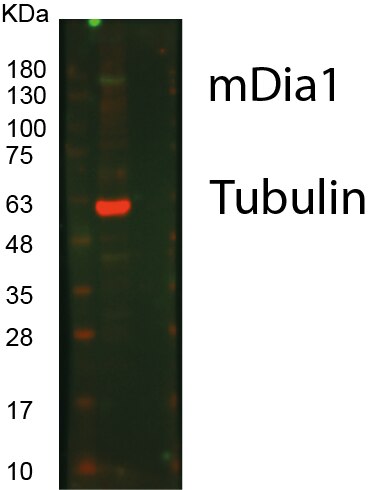 |
